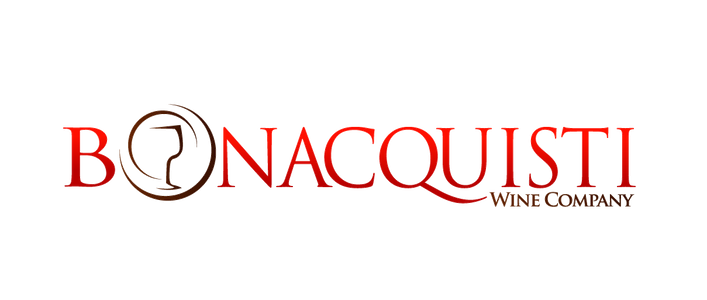Denver Winery
Categories
- All
- $15 food and wine pairings
- 2008 Release
- 2008 Syrah
- 2011 Riesling
- 2011 wines
- 46th and Pecos
- 5280 magazine
- About the winery
- Academia Ana Marie Sandoval
- Ale House at Amatos
- Amendment XXI Denver
- art
- artist
- Aspen Food and Wine Classic
- Basics
- Beef Brisket recipe
- beer
- Bella Risa
- BLM
- Blog
- Bonacquisti history
- Bonacquisti Wine club
- Bonacquisti Wine Co.
- Bookcliff Vineyards
- breweries
- Bucchi Cafe Cubano
- Burgers and wine
- Carbone's Italian Sausage Market
- Carl's Pizza
- chef demo
- chillable
- Chocolate
- Christmas wines
- Club Wino
- Colorado beer
- Colorado Cabernet
- Colorado Cabernet Franc
- Colorado Chardonnay
- Colorado food and wine
- Colorado jug wine
- Colorado Mountain Winefest
- Colorado Pinot Noir
- Colorado Riesling
- Colorado table wine
- Colorado Urban WInefest
- Colorado wine
- Colorado wine club
- Colorado Wine Cocktail Celebration
- Colorado wine events
- Colorado Wine Farmers' Market
- Colorado wine tasting
- Colorado Wine Week
- Colorado Winery Row
- Colorado Wino
- Colt & Gray
- Common Grounds Coffeehouse
- construction
- Cork
- Crafty Ladies
- Creative Culinary
- custom labels
- custom wine
- custom wine labels
- D red
- Dale Katechis
- Dale's Pale Ale
- Dan Daru
- Daniel Luna
- Denveater
- denver
- Denver adventures
- Denver B-Cycle
- Denver bars
- Denver bcycle
- Denver event space
- Denver food event
- Denver fundraisers
- Denver International Airport
- Denver live music
- Denver music events
- Denver nonprofits
- Denver Off the Wagon
- Denver on a spit
- Denver pizza
- Denver Post
- Denver restaurants
- Denver wine
- Denver wine event
- Denver wine events
- Denver Wine Tasting
- Denver Winery
- Denver winery for rent
- DenverColoradoWine
- denverwine
- denverwineclub
- denverwinery
- Desert Moon Vineyards
- DIA restaurants
- Diebolt Brewing
- Directions
- DJ
- Ernie's Pizza Bar
- Escuela de Guadalupe
- Evaluating wine
- Events
- Factotum Brew House
- family winery
- familywinery
- Featured Slider
- Food
- food and wine
- Food Network
- Food pairings
- Frank Bonanno
- Fridays Uncorked
- Friends
- funk
- Gaetano's
- Garganelli with Duck Ragu recipe
- Garlic Knot
- Gewurztraminer
- gifts
- go local colorado
- Good Day Colorado
- Grand Valley AVA
- Groove
- growler
- growlers
- gumbolefunque
- Guy Drew Vineyards
- Happy hour
- Hash
- Haystack Mountain Goat Cheese
- Highland bars
- Highland Farmers Market
- Highland Restaurant
- Highland Tap & Burger
- Highland Tavern
- Highlands Restaurant
- Holiday
- holiday gifts
- Holiday Hours
- holiday wine
- Holy Family Denver Roman Catholic Church
- Il Mondo Vecchio
- Intro to wine
- Italian Sausage
- Italy
- Jahi Simbai
- John Hickenlooper
- Jonesy's EatBar
- jug
- Jug White
- Jug wine
- June
- Keg Wine
- Keith Arnold
- learn about wine
- Liner
- Linger
- Linger Denver
- Littleton pizza
- Live Music
- LoHi
- LoHi bars
- LoHi Steakbar
- LoHi wine shops
- LoLa
- Lou's Food Bar
- Manitou Springs Wine Festival
- Marczyk Fine Foods
- Mario Batali
- Marti Van Wagenen
- Mesa Park Vineyards
- Metro State University
- Mile High Weimaraner Rescue
- Mizuna
- Mondo Vino
- MouCo
- music
- New products
- Northside
- Oskar Blues
- Pasquini's Cherry Creek
- Pasquini's Denver Tech Center
- Pasquini's Highland
- Pasquini's Lone Tree
- Pasquini's Pizza
- Pasquini's South Broadway
- Pasquini’s Pizza
- Past Events
- Paul Bonacquisti
- Paxia
- Pecos
- Pig and Block
- Pig and Block Charcuterie
- pink wine
- Pizza and Wine
- Pochitos Tortilla Factory
- podcast
- Pork chop
- prosecco
- Raul Salazar
- recycle
- Red Sox sports bar
- red wine
- refills
- Reverb the Verse
- Rhymes with Wine
- Riedel
- Riedel O Series
- Riesling
- Roberta's Chocolates
- Rocky Mountain Oysters wine pairing
- Root Down Denver
- Rose
- Ruth Tobias
- Sangiovese
- sangria
- Sausage pizza recipe
- scents
- scents of sunnyside
- Sculpture Park
- shop small
- Sian Nagan
- Sip and Shop
- Slotted Spoon
- small business
- Smelling wine
- Soul
- sparkling wine
- Spuntino
- Spuntino Denver
- Steely Dan
- Stingray Lounge
- summer
- Summer Wine
- Sunnyside
- Sunnyside Denver
- Sunnyside music
- Sunnyside Restaurants
- Sunnyside wine
- Tasting
- Tasting wine
- thanksgiving gifts
- The Crooked Stave
- The Original Chubby's
- Three Squared Jazz
- Timberline Steaks
- Tony P's
- Tony Pasquini
- tortillas
- Uncatagorized
- Uncle Pauly's
- Universal
- Urban winery
- Valentines Day
- Valentines Day Denver
- Van Wagenen Ltd
- Vineyard
- vinny and vinyl
- Vinny No Neck
- Viognier
- Vita
- West Elks AVA
- white wine
- William & Graham
- Wine
- Wine & Chocolate weekend
- wine 101
- wine and music
- wine barrels
- Wine basics
- wine class
- Wine Club
- Wine education
- wine growlers
- wine labels
- Wine refills
- Wine shops
- Wine tasting tips
- Wine terms
- Wine Trends
- Wine TV
- wine vessels
- wineclub
- WineGuysTV
- wineries in Denver
- winery
- Winery Info
- Wynkoop Brewing Co.
- Zio Romolo's Alley Bar
The Anatomy of a Crush at Denver’s Urban Winery
[caption id="attachment_1137" align="aligncenter" width="550" caption="Crushing it at our Denver winery on 46th and P...
Read more
5 Years of Making Wine in Denver
It all started so simply in 2006 when Paul Bonacquisti lost his job as a radio DJ due to his station flipping formats...
Read more
The Making of a Denver Urban Winery
Forty-sixth and Pecos. Cherry Creek North, it is not. Traffic is heavy with Interstate 70 just a few hundred feet awa...
Read more
A Denver Winery By the Numbers
Some of us are the analytical type. We choose round numbers over vague references. In the world of wine, there’s room...
Read more
Denver Eats: Sunnyside Dining
With the explosion of top nosh in LoHi and the Highlands, Sunnyside often gets lost in the foodie conversation. Perha...
Read more

